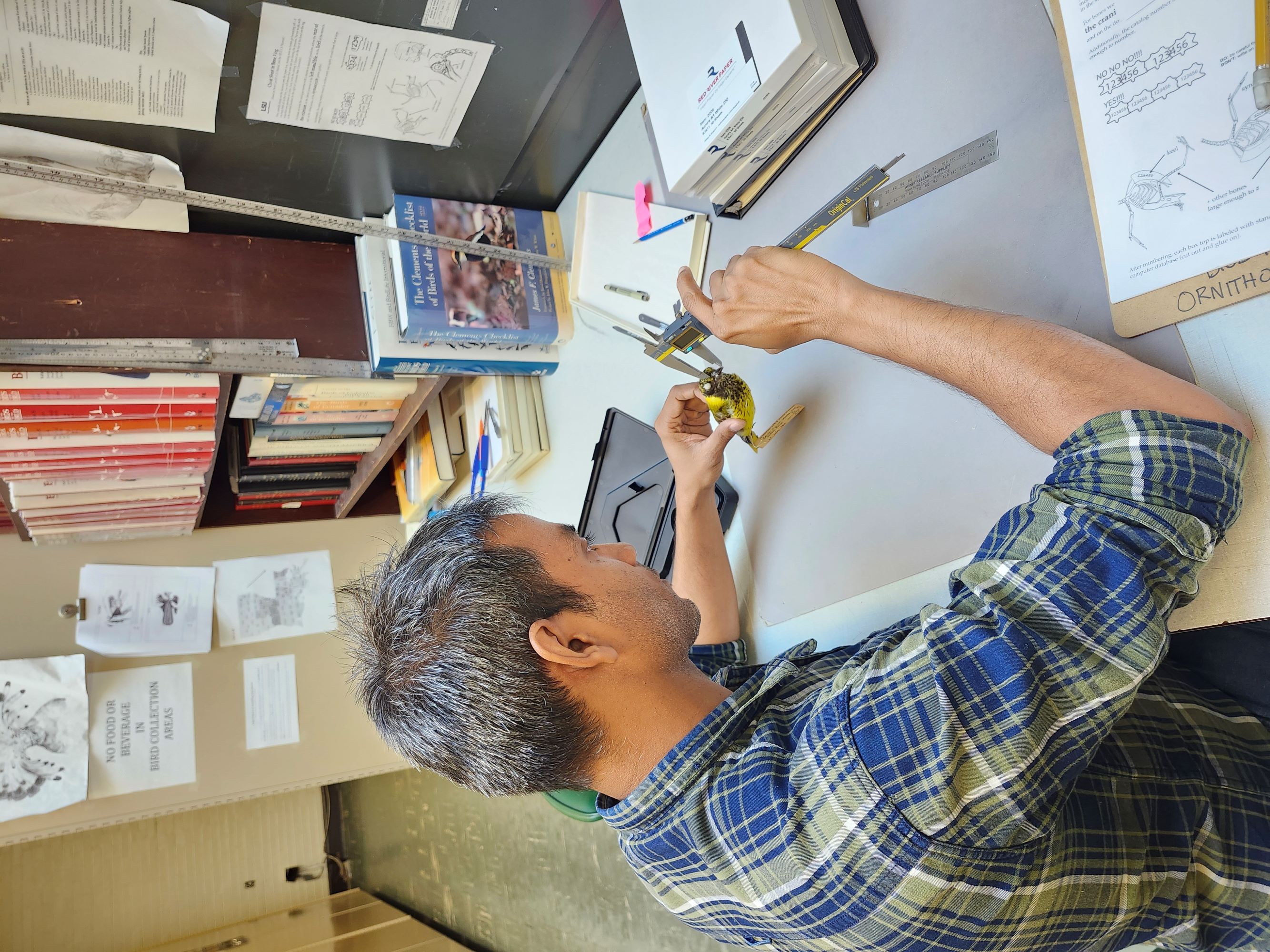Fulbright Fellow Dr. Ashish Jha joins the LSUMNS

Dr. Jha is interested in avian conservation using multi-pronged approaches including genetics, long-term monitoring, field-based natural history studies and community outreach.
The LSU Museum of Natural Science is proud to announce the arrival of India-based ornithologist Dr. Ashish Jha to the Mason Lab for a nine-month Fulbright Fellowship, which is the most prestigious international exchange program for scholars to carry out professional projects abroad.
Dr. Jha is an Engineer turned Ornithologist. After his UG and PG in Biotechnology, Dr. Jha pursued a PhD in Ornithology. His doctoral research was centered on southern India endemic, and globally threatened, Yellow-throated Bulbul (Pycnonotus xantholaemus), more specifically the biogeographic history, population connectivity, and habitat suitability model of this species. Post graduation, he joined the Kerala Agricultural University (Kerala, India) and worked on the Kerala Bird Atlas, a state-wide citizen-science project. He analyzed 300,000 records of 371 species and communicated the findings to various stakeholders including the general public, policy makers, forest department officials, and science fellows. Then, Dr. Jha worked at the IISER Mohali (Punjab, India) as a postdoctoral fellow to study avian community dynamics and feeding guild via stable-isotope analysis until 2023, when he joined Wildlife Institute of India (Uttarakhand, India).
 Dr. Jha working in the LSUMNS lab.
Dr. Jha working in the LSUMNS lab.
Dr. Jha's appointment to the LSUMNS was made possible by Dr. Nicholas Mason's dedication to the Museum and commitment to excellence. Dr. Mason's Lab will host Dr. Jha for nine months so he can test the core-periphery hypothesis with our bird collection. The core-periphery hypothesis postulates that populations of a species at the core region of its distribution range, where conditions are optimal for its survival and reproduction, differ in demographic (e.g., abundance), genetic (e.g., DNA polymorphism) and ecological characteristics (e.g., dietary niche) from those at the periphery, where the conditions may be sub-optimal for species survival. Dr. Jha quantify external phenotypes and genomic variation across populations in multiple avian species in order to empirically test the core-periphery hypothesis, using Nearctic birds as a model system.
Dr. Jha chose the LSU Museum of Natural Science as his Fulbright Fellowship research destination because of our impressive specimen collection as well as our cutting edge research infrastructure and equipment. He will use spectrophotometers to study plumage coloration, 3D scanners to study bird morphology, gut content collection to study avian diet, alcohol-preserved avian tissues and molecular lab facility to do genetic analyses, and a bioinformatics cluster to carry out computational pipelines.
We looking forward to learning more about Dr. Jha's work at the LSUMNS!